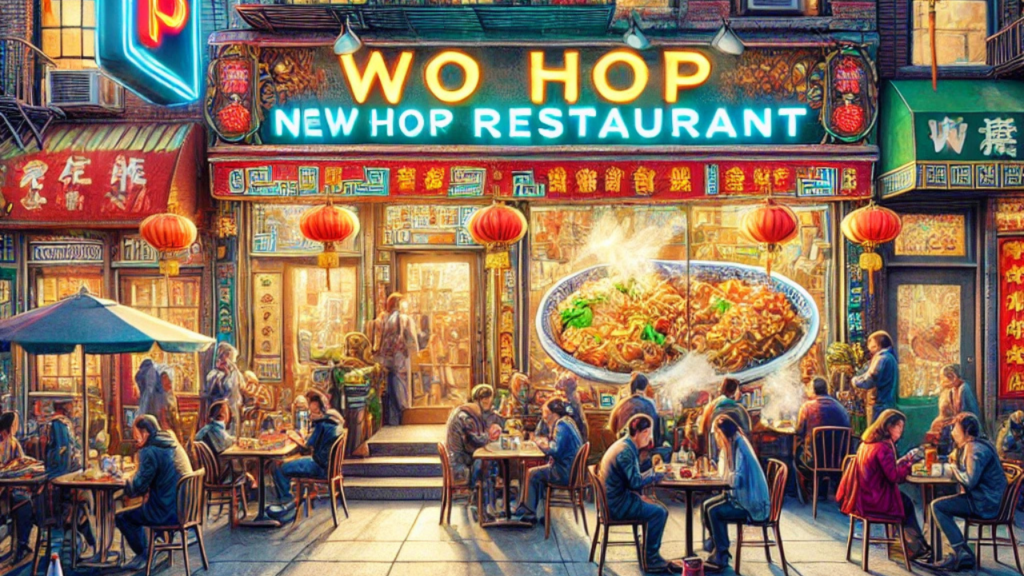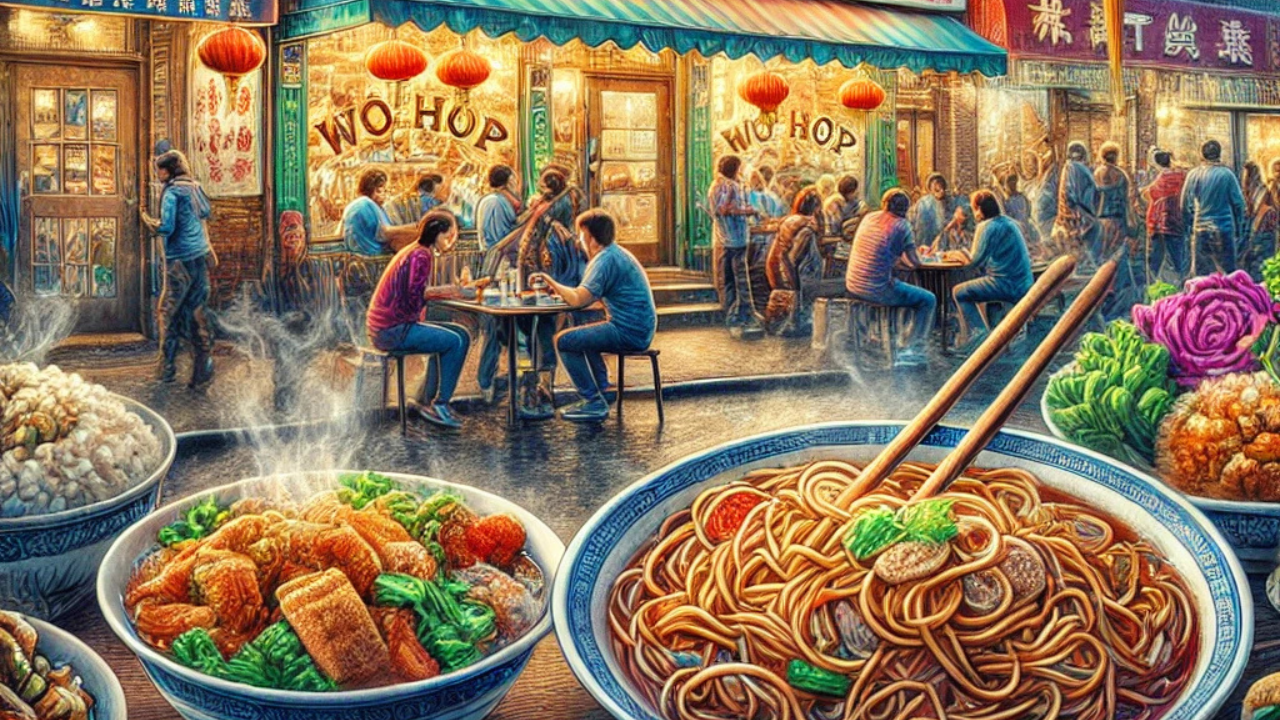Introduction
Nestled in the heart of Chinatown, Wo Hop stands as an enduring testament to cultural heritage and culinary mastery. wo hop photos This iconic restaurant is not just a dining establishment but a symbol of shared experiences and vibrant community life. Photography has played a crucial role in immortalizing these moments, turning them into cherished memories.
Wo Hop photos are more than just visual snapshots; they encapsulate the spirit of Chinatown, the warmth of its people, and the flavours of its cuisine. From candid shots of patrons enjoying meals to artistic representations of iconic dishes, these photos offer a glimpse into this beloved institution’s cultural and historical tapestry. This article delves into the legacy and significance of Wo Hop photos, exploring their historical context, artistic impact, and cultural resonance.
The History of Wo Hop
Wo Hop’s story began in 1938 when it opened in New York City’s Chinatown. Over the decades, it has evolved from a humble eatery to a cultural landmark that locals and tourists cherish. Its name is synonymous with comfort food and authenticity, serving dishes that have remained consistent in quality and flavour for generations.
Photographs documenting Wo Hop’s journey reveal its transformation over time. Early black-and-white images capture the simplicity of its beginnings, with modest decor and handwritten menus. As the years passed, photos began to tell stories of its bustling crowds, long lines of loyal customers, and the vibrant energy of Chinatown. These images are invaluable in preserving the restaurant’s history and place within the larger narrative of immigrant experiences in America.
Significant events, such as Chinese New Year celebrations and visits from notable figures, have also been immortalized in photos. Each image serves as a time capsule, reflecting the resilience and spirit of a community that has thrived despite challenges. The history of Wo Hop is etched not only in its walls but also in the countless photos that capture its enduring charm.
The Visual Narrative of Wo Hop Photos

Wo Hop photos are a rich visual tapestry that speaks to the soul of Chinatown. They often feature key elements such as bustling streets, steaming plates of food, and joyful patrons. These photos are more than just culinary snapshots; they celebrate culture, community, and connection.
One recurring theme in Wo Hop’s photography is the portrayal of its iconic dishes. From heaping plates of lo mein to perfectly crispy egg rolls, these images showcase the artistry and authenticity of Chinese cuisine. Photographers often emphasize the vibrant colours and textures of the food, creating mouthwatering visuals that invite viewers to experience the flavours firsthand.
Another hallmark of Wo Hop photos is their focus on candid moments. Customers laughing over shared meals, chefs skillfully preparing dishes, and servers bustling through crowded spaces capture the essence of daily life at the restaurant. These spontaneous shots bring a sense of realism and intimacy, allowing viewers to feel like they are part of the scene.
Lighting and framing in these photos also play a significant role. Warm, ambient lighting highlights the restaurant’s inviting atmosphere, while creative angles and compositions add depth and dynamism. Whether taken by professional photographers or enthusiastic diners, these images collectively form a visual narrative that celebrates Wo Hop’s unique charm.
The Cultural Significance of Wo Hop Photos
Wo Hop photos go beyond aesthetics; they are vital to Chinatown’s cultural heritage. These images serve as a bridge between generations, preserving stories of family gatherings, first dates, and late-night feasts. For many, they are a tangible link to cherished memories and a testament to the enduring spirit of the community.
Through these photos, the essence of Chinatown comes to life. They highlight the diversity and resilience of the neighbourhood, showcasing the vibrant interplay of tradition and modernity. Wo Hop’s role as a gathering place is evident in the myriad of faces captured in these images—a testament to its universal appeal.
Moreover, wohop photos contribute to the broader cultural landscape of New York City. They document the city’s rich tapestry of immigrant stories, offering a window into the lives and traditions of the Chinese-American community. By preserving these moments, these photos help foster a deeper understanding and appreciation of Chinatown’s contributions to the city’s identity.
Modern-Day Impact of Wo Hop Photography
In the age of social media, Wo Hop photos have taken on a new life. Platforms like Instagram and Facebook have amplified their reach, turning them into digital ambassadors of Chinatown. Visitors worldwide share their experiences through photos, bringing Wo Hop’s charm to a global audience.
This modern-day popularity has inspired a new wave of amateur and professional photographers. Many are drawn to the challenge of capturing Wo Hop’s bustling energy and intricate details. Whether it’s a close-up of a steaming bowl of wonton soup or a wide shot of the neon-lit storefront, these photos celebrate the restaurant’s unique character.
Additionally, Wohop has become a muse for food photography trends. Its dishes’ vibrant presentation and cosy interior ambience set a standard for capturing the essence of dining experiences. These photos showcase the food and evoke emotions, making viewers feel part of the story.
Exhibitions and projects focused on Chinatown often feature wo-hop photos, further cementing their cultural significance. They remind us of the power of photography to preserve and celebrate community, heritage, and identity in an ever-changing world.
Conclusion
Wo Hop photos are more than just images; they celebrate tradition, resilience, and connection. From their historical roots to their modern-day impact, these photos tell the story of a beloved institution and the community it represents. They capture the essence of Chinatown, preserving its legacy for future generations.
For those who visit Wo Hop, taking a photo is not just about documenting a meal; it’s about becoming part of a larger story. So, next time you find yourself in Chinatown, don’t forget to bring your camera and add your chapter to the rich visual narrative of Wo Hop.
FAQs
What is Wo Hop, and where is it located?
Wo Hop is a historic Chinese restaurant in New York City’s Chinatown, known for its authentic cuisine and welcoming atmosphere.
Why are Wo Hop photos considered culturally significant?
They preserve the history and identity of Chinatown, showcasing its traditions, community spirit, and culinary artistry.
What are some iconic dishes featured in Wo Hop photography?
Popular dishes include lo mein, egg rolls, wonton soup, and General Tso’s chicken, beautifully captured in photos.
How can amateur photographers capture the essence of Wo Hop?
Focus on candid moments, vibrant food presentations, and the cosy ambiencerestaurant’s cosy ambience. Experiment with lighting and angles for creative results.
Are there any exhibitions or collections dedicated to Wo Hop photos?
Many Chinatown-focused exhibitions feature wo-hop images to celebrate the neighbourhood’s cultural heritage.
How has the rise of social media impacted the popularity of Wo Hop photos?
Social media has amplified their reach, turning them into global icons and inspiring new trends in food photography.
Can visitors contribute their photos to Wo Hop’s legacy?
Absolutely! Sharing your Wo Hop photos on social media or in community projects helps keep its story alive.
You May Also Read: https://buznews.org/awards-daily/
